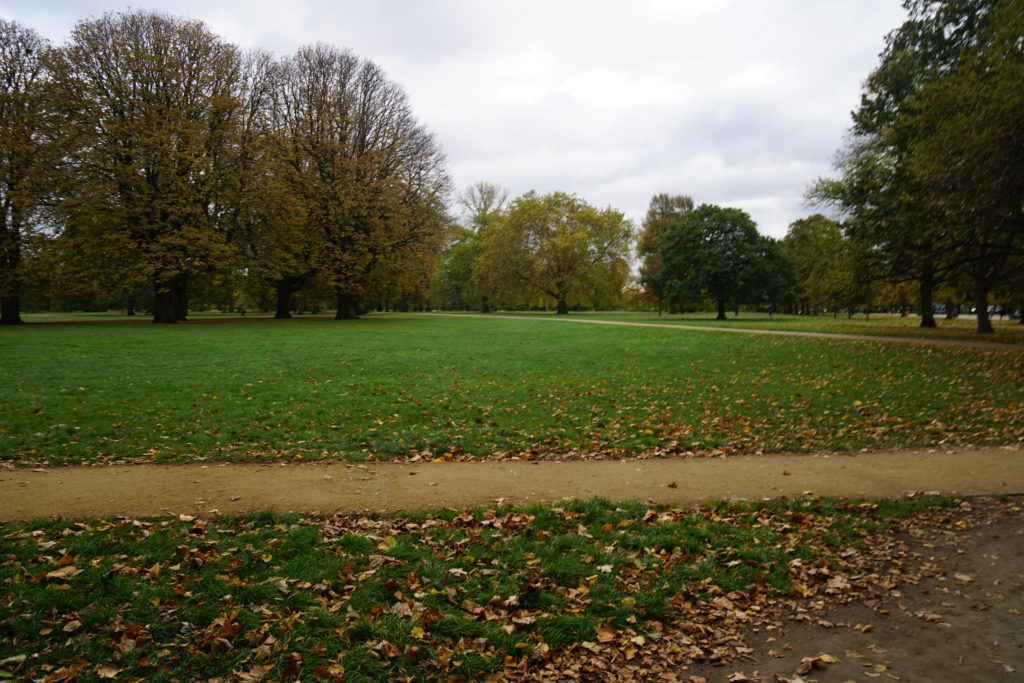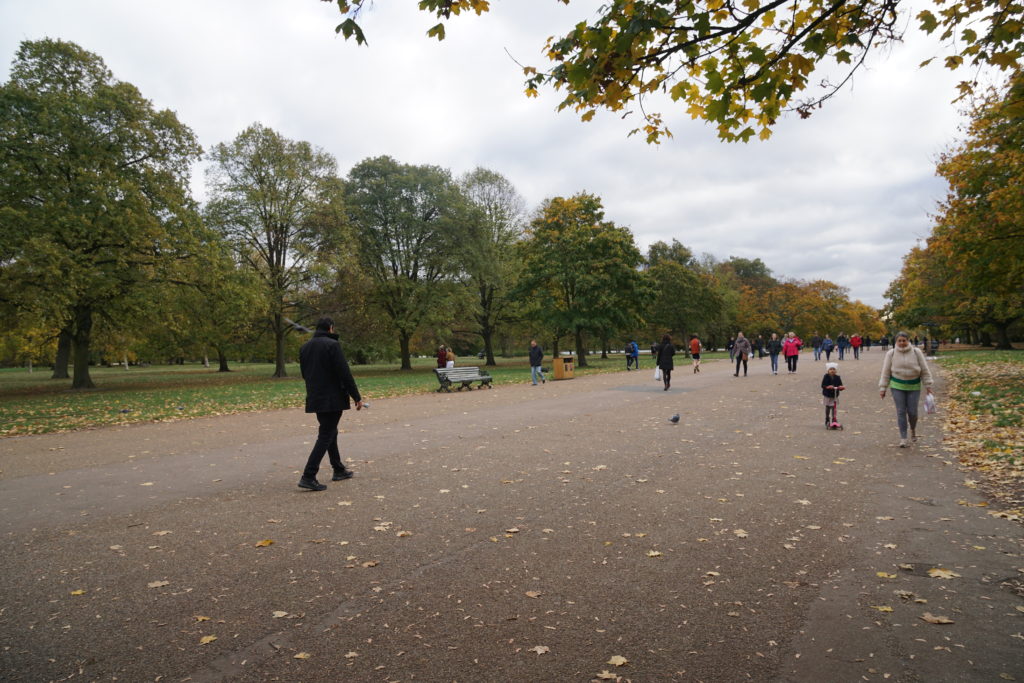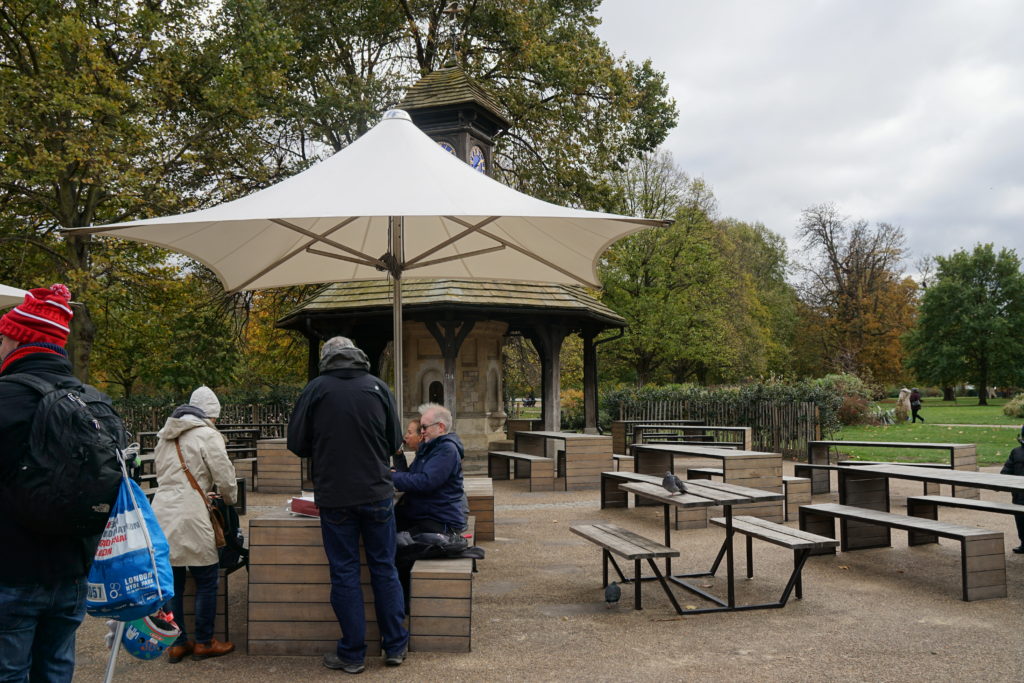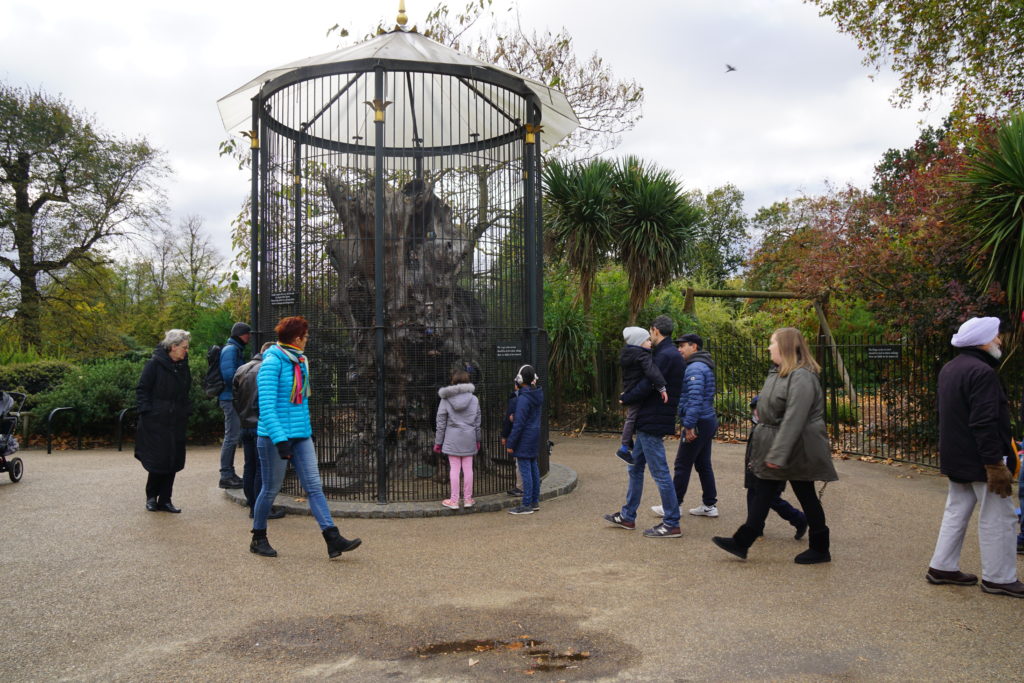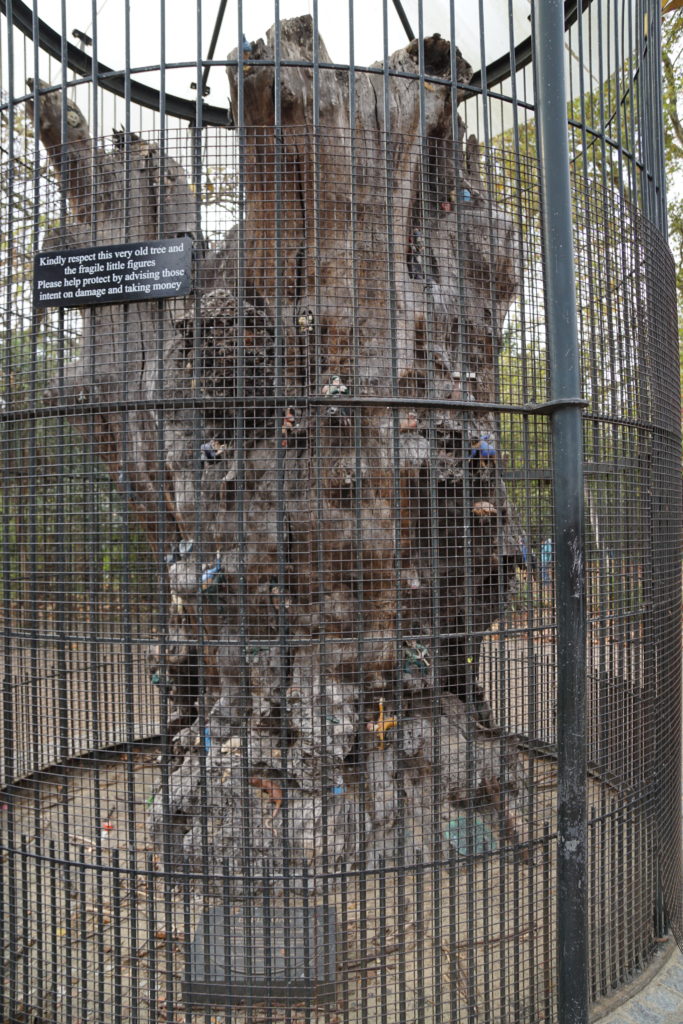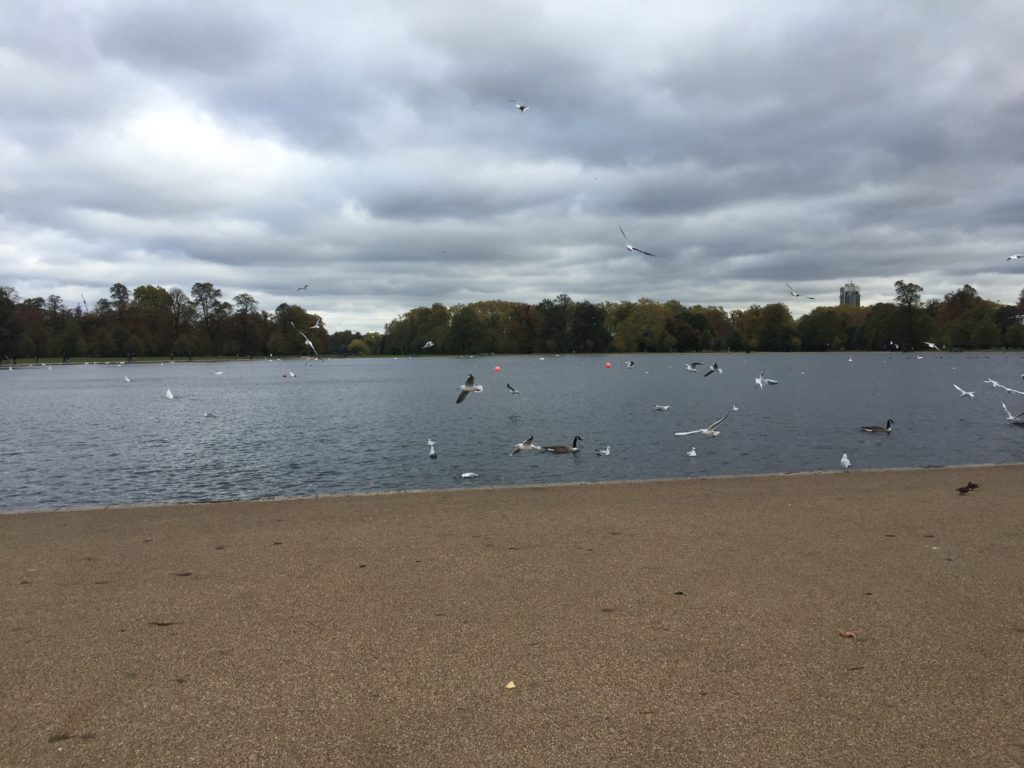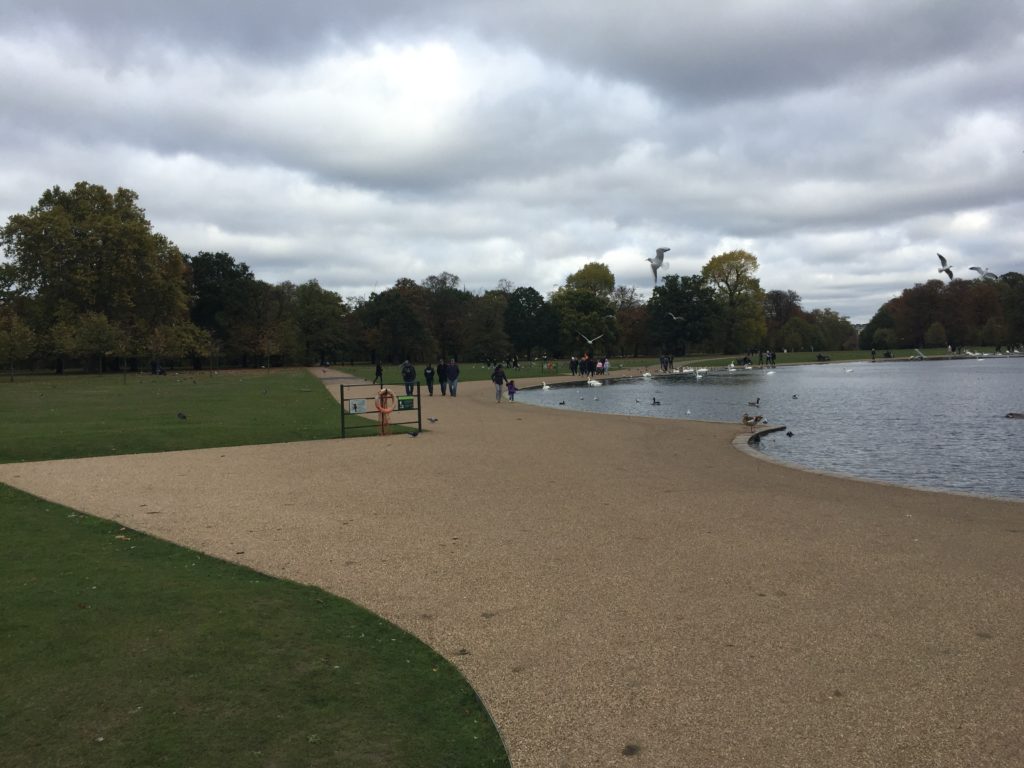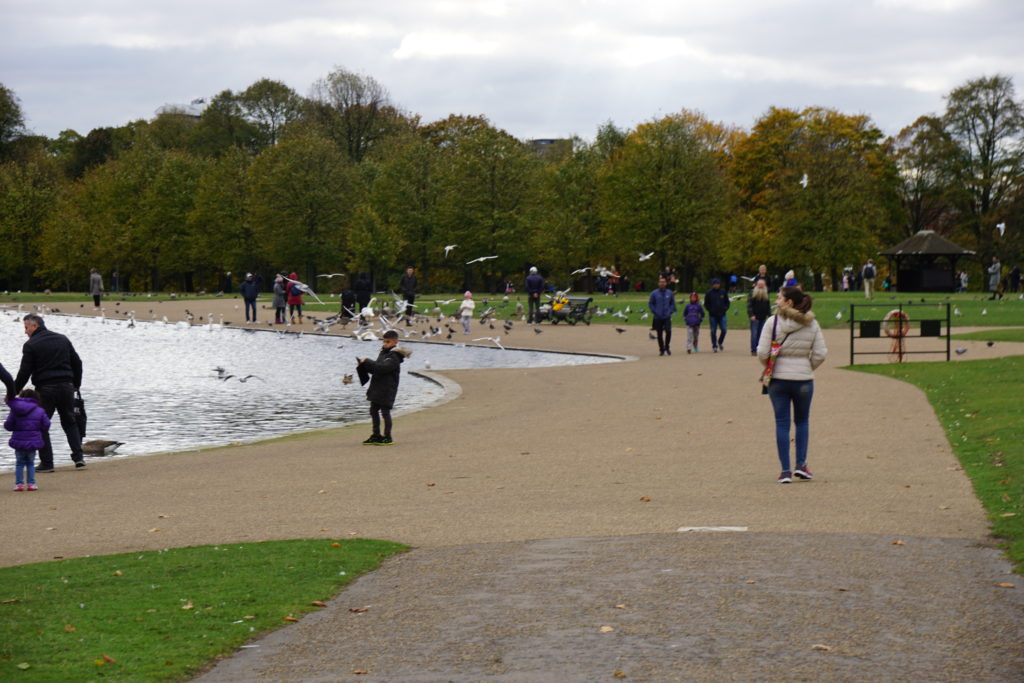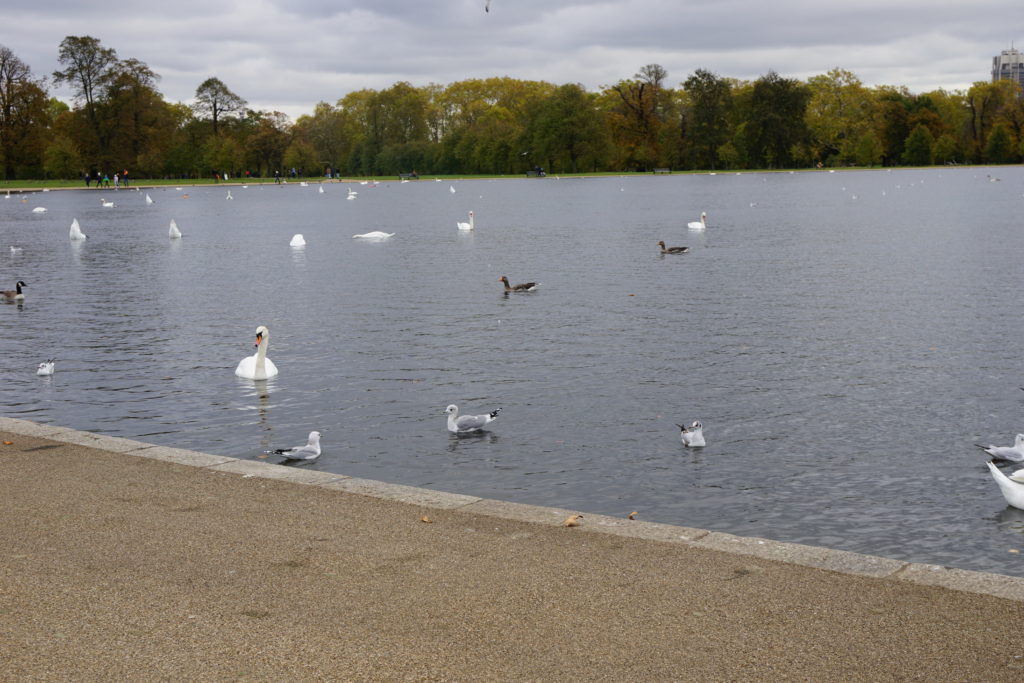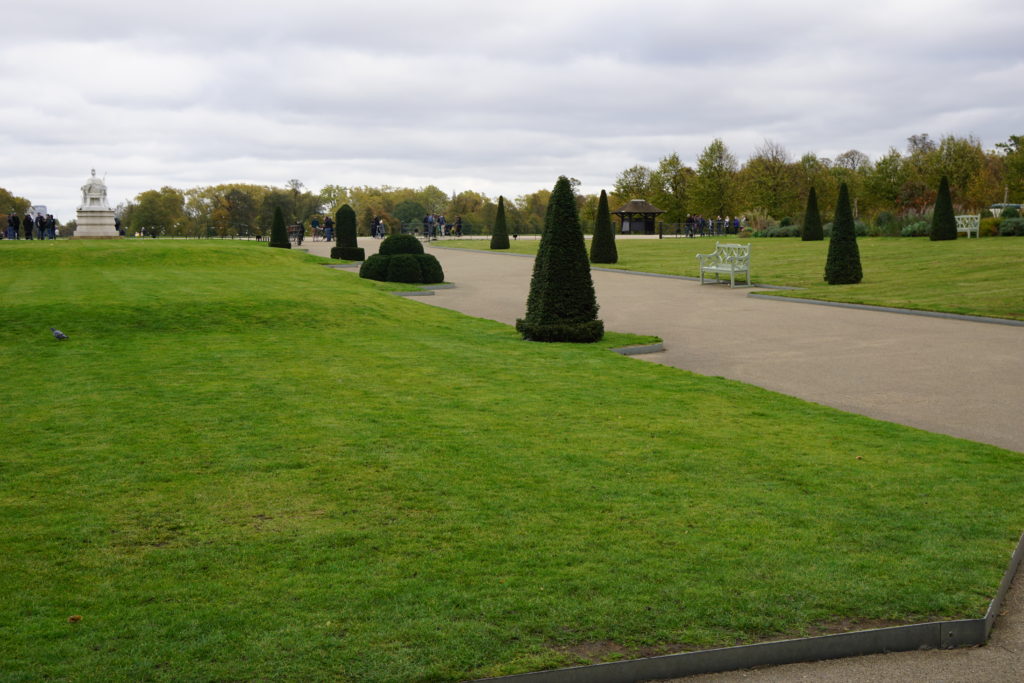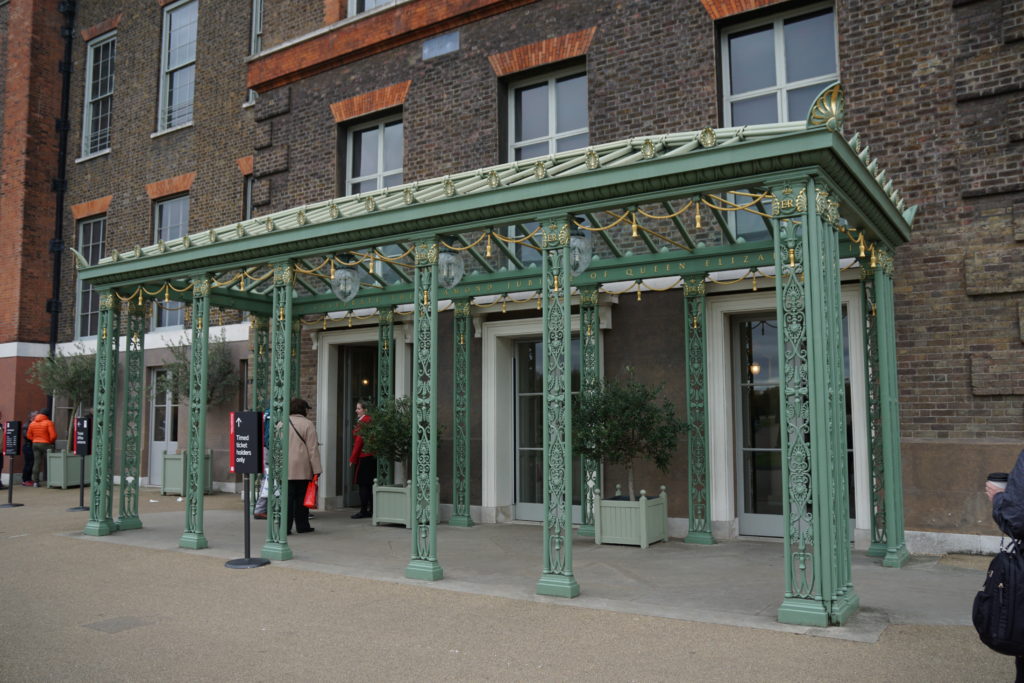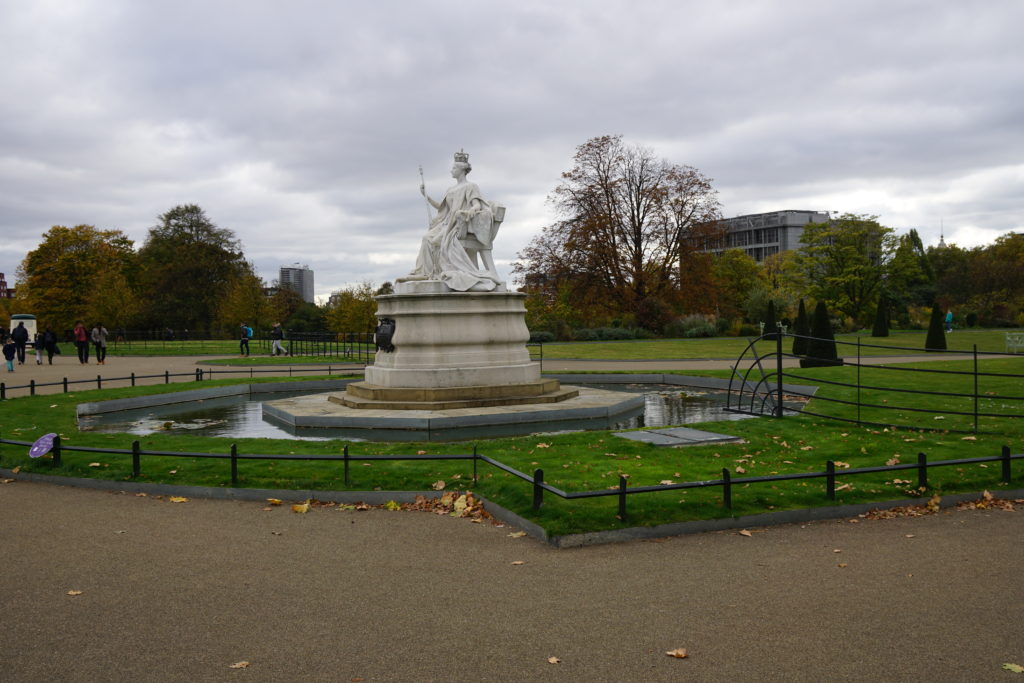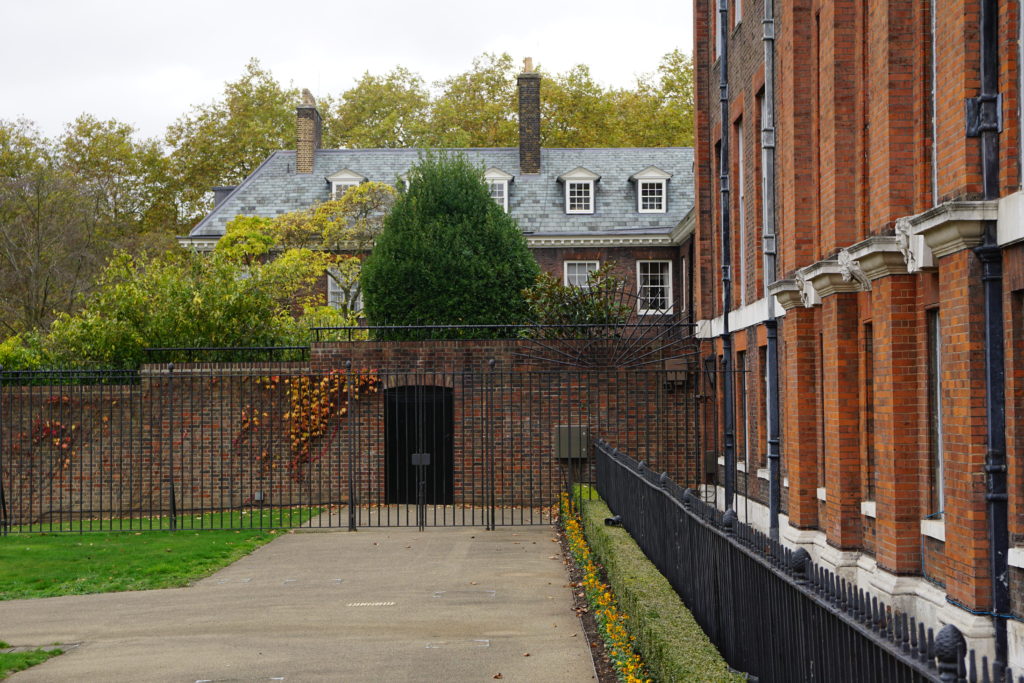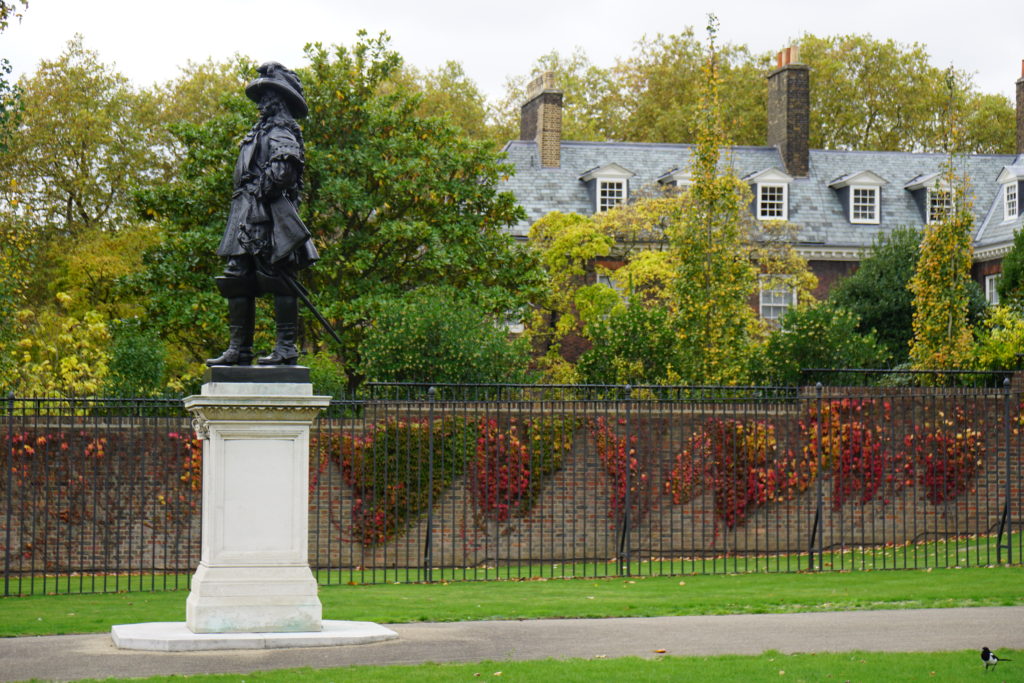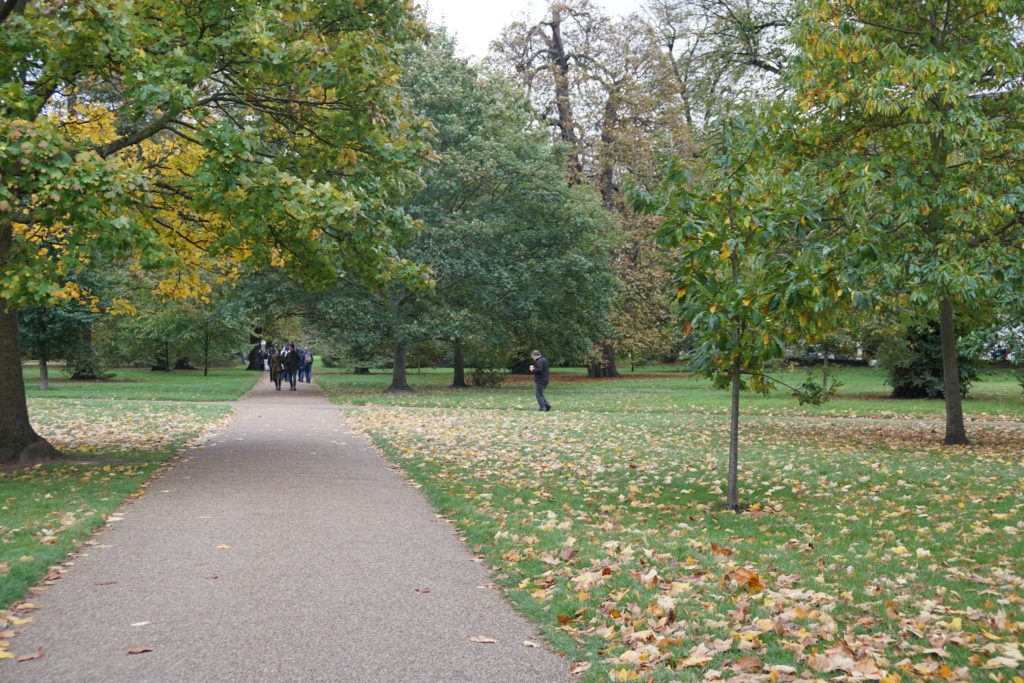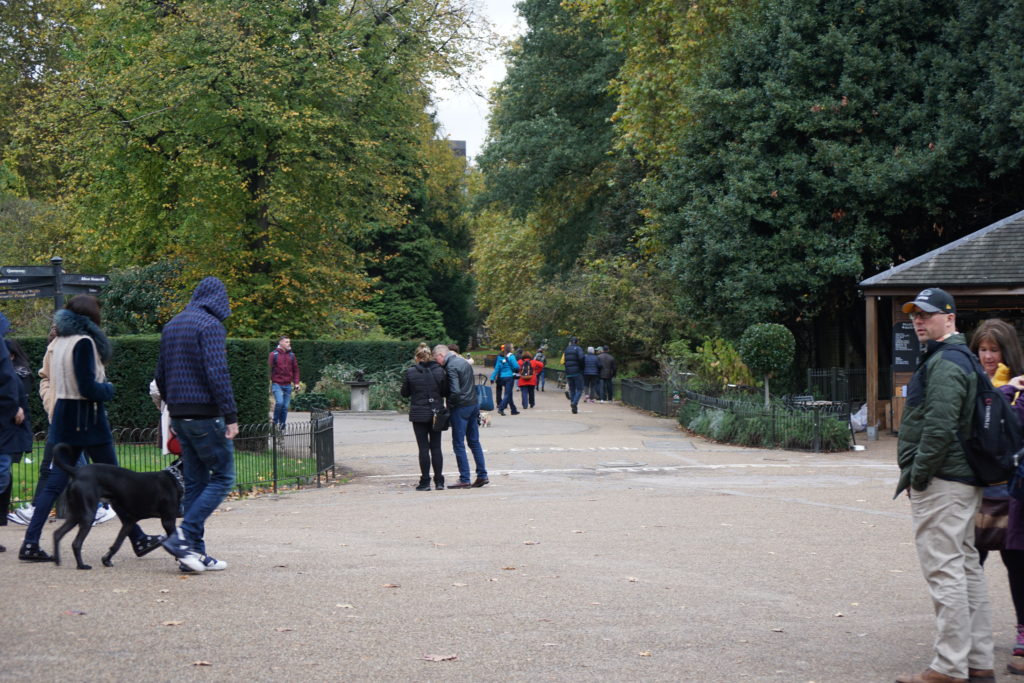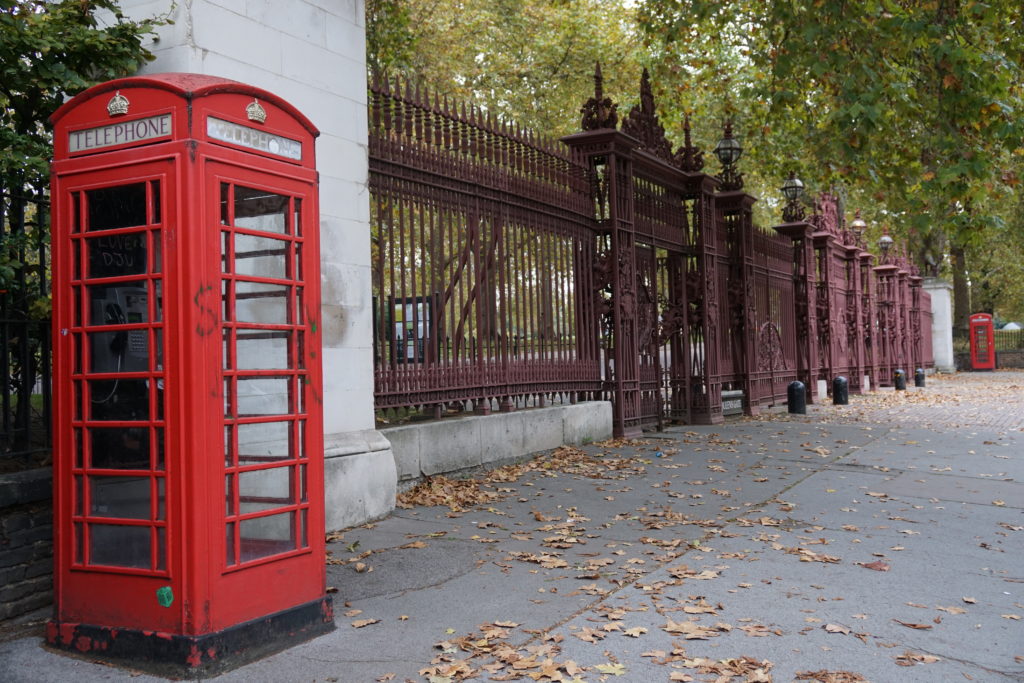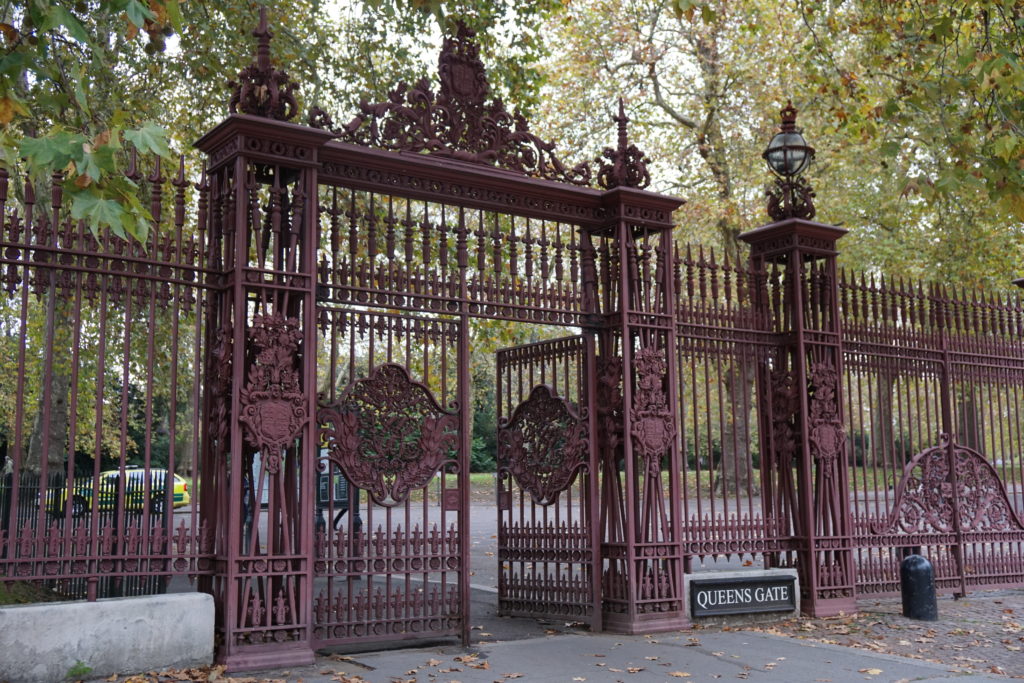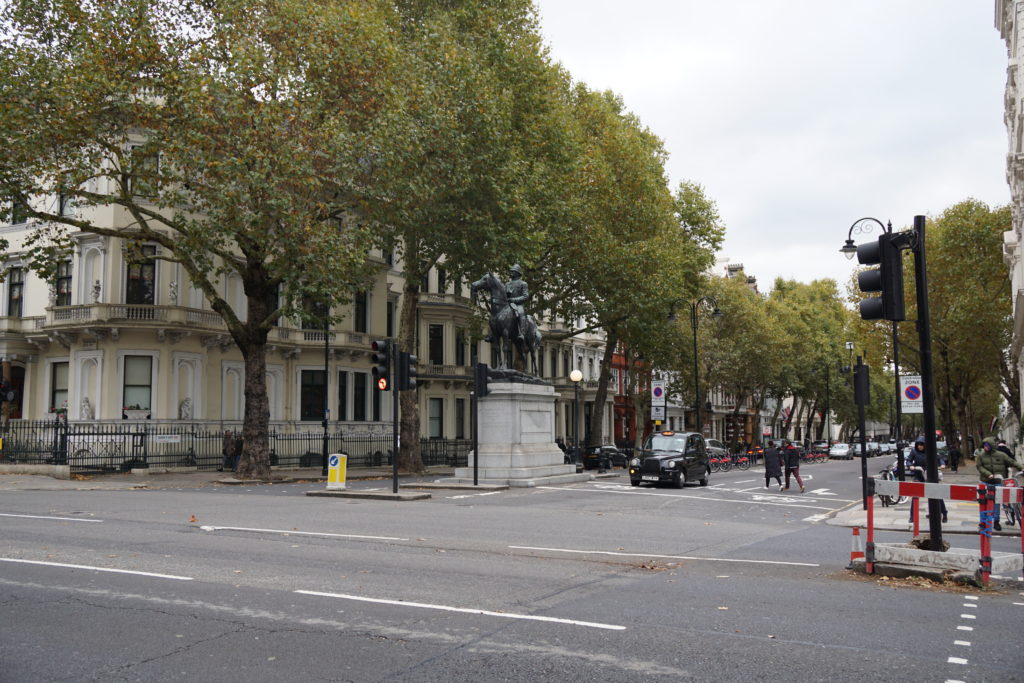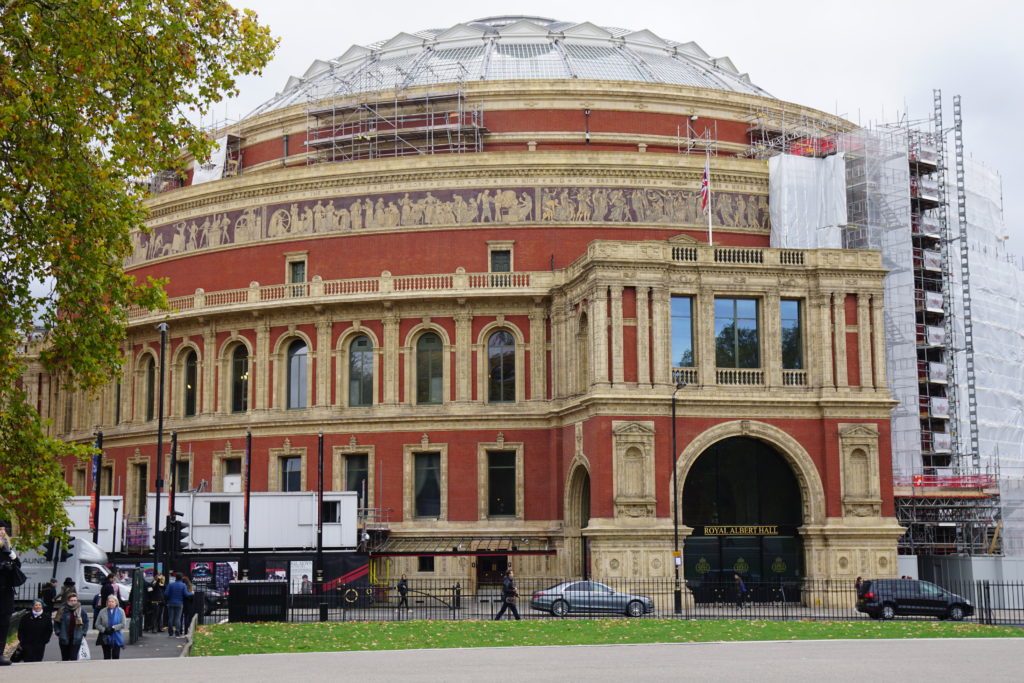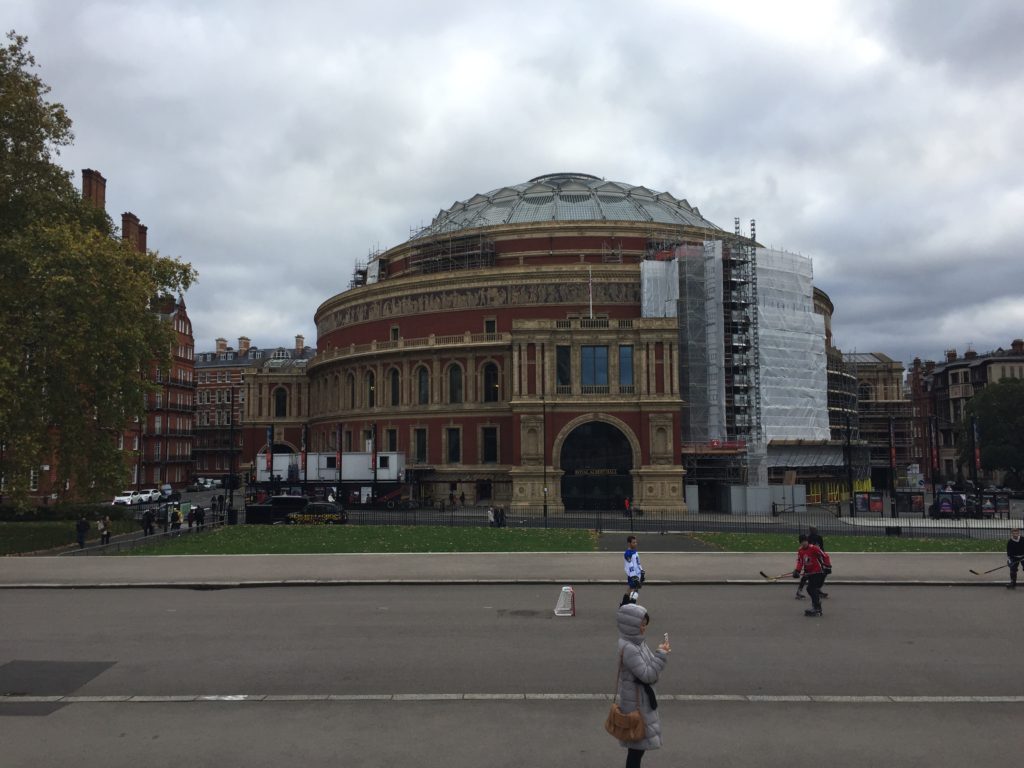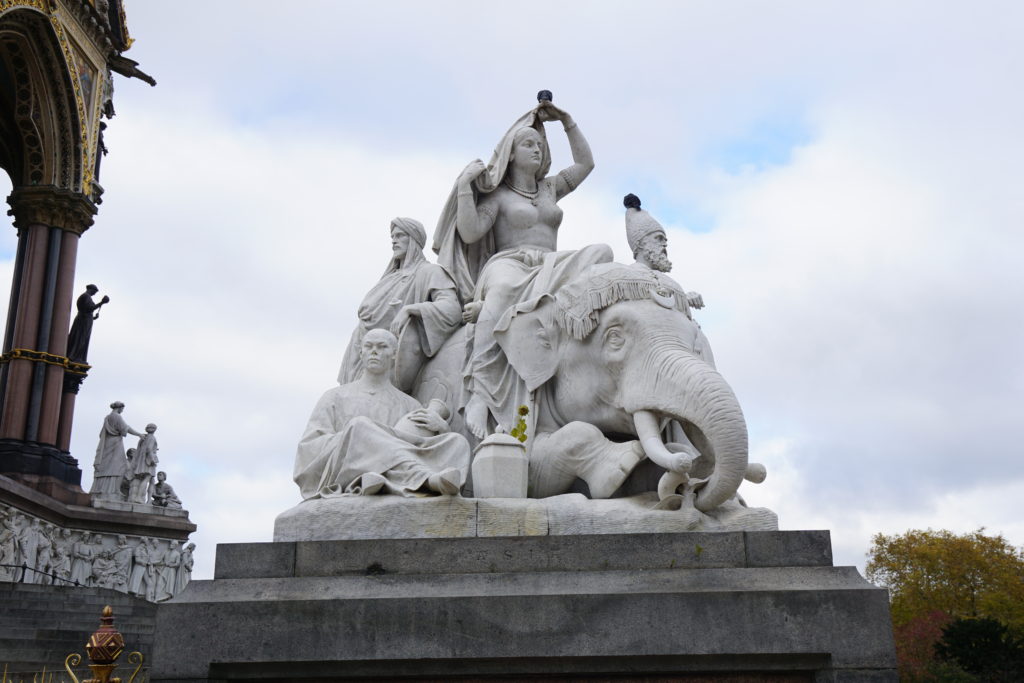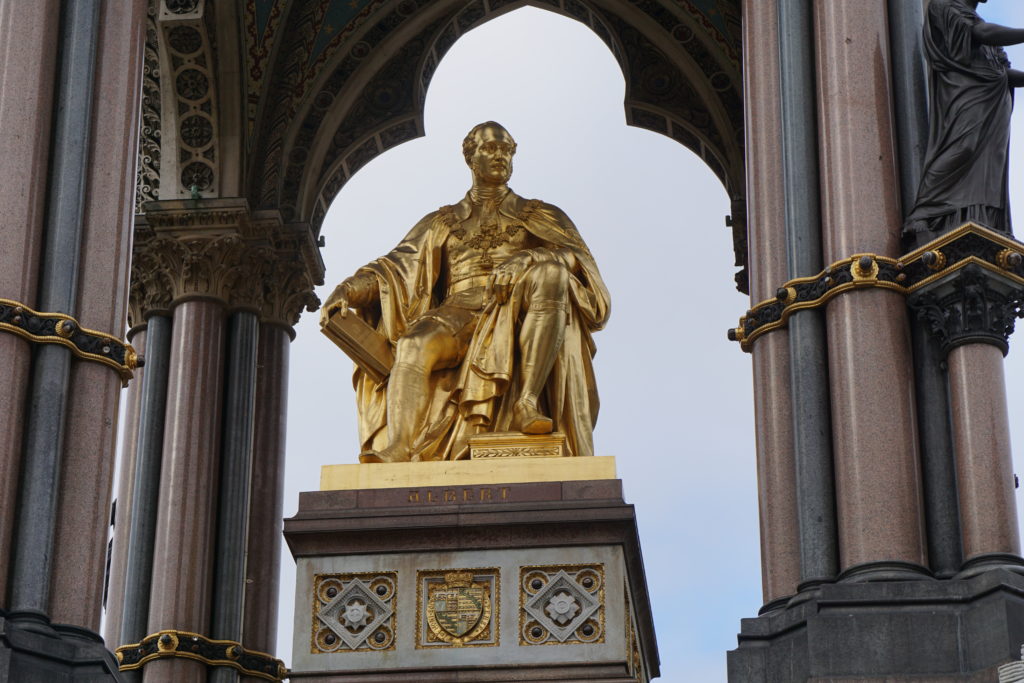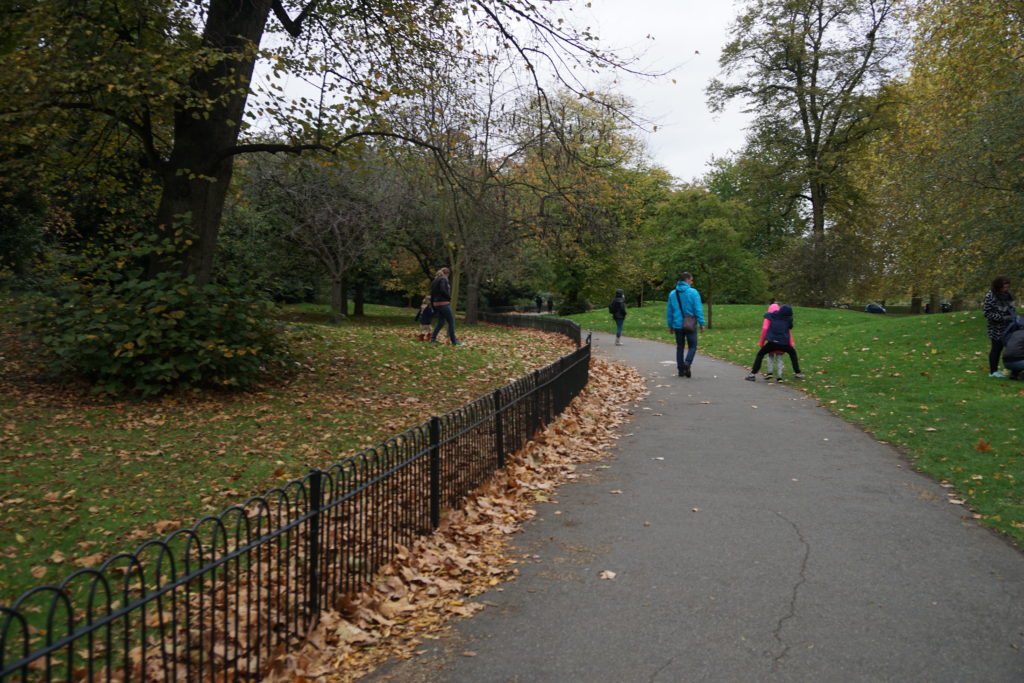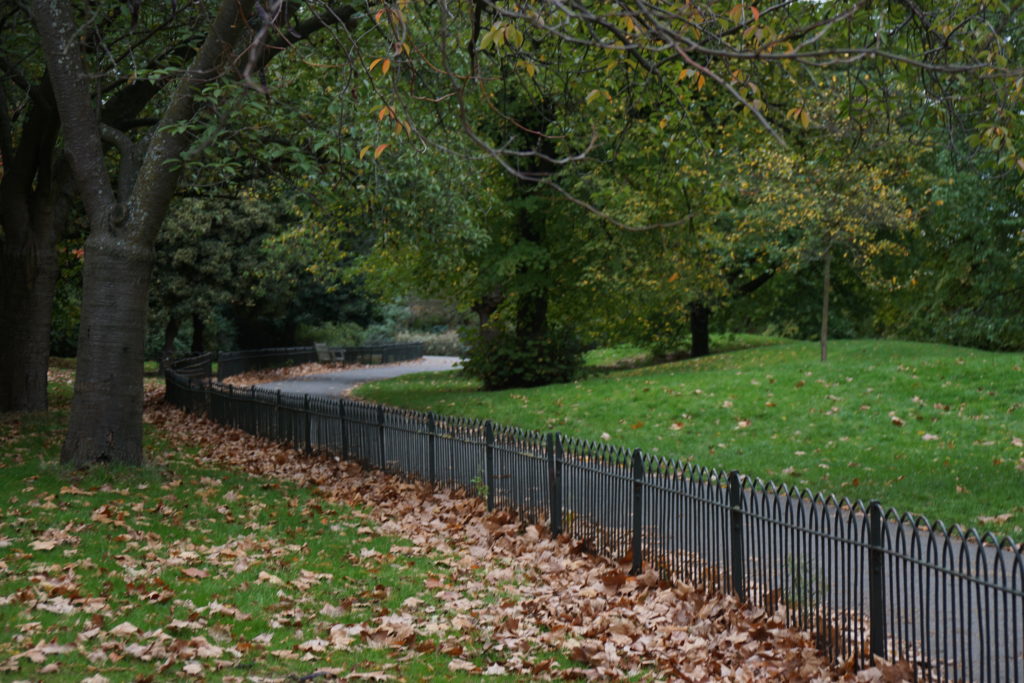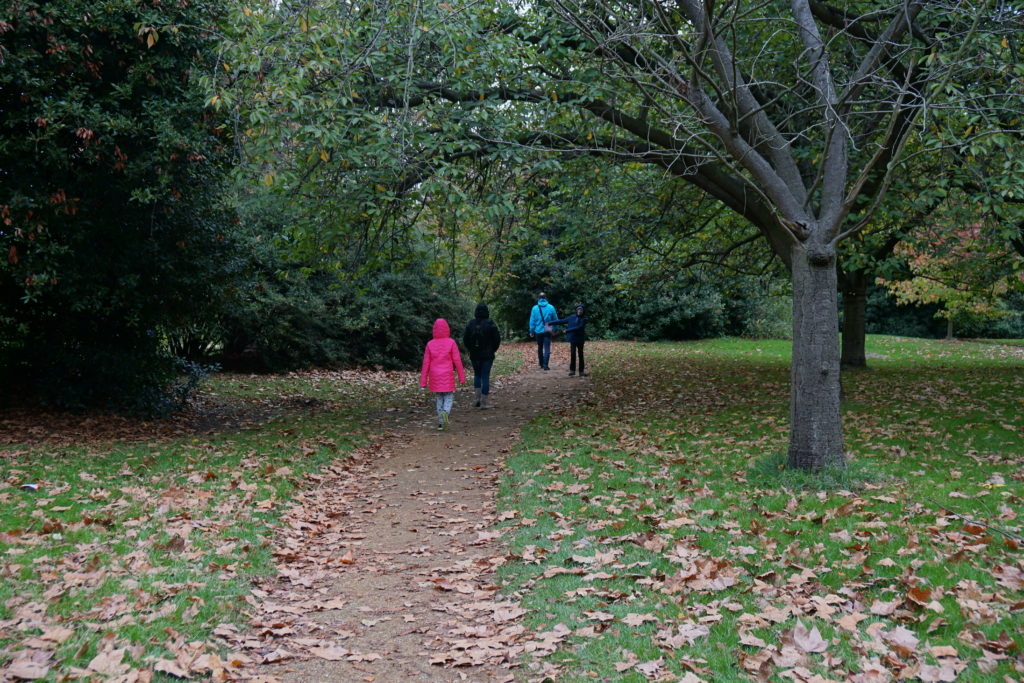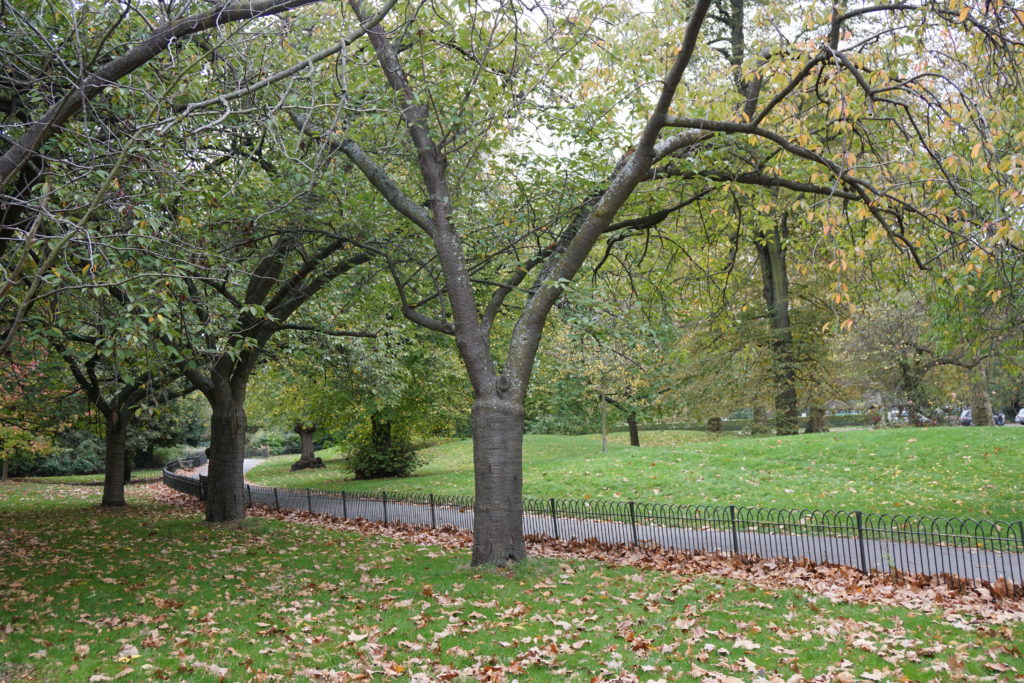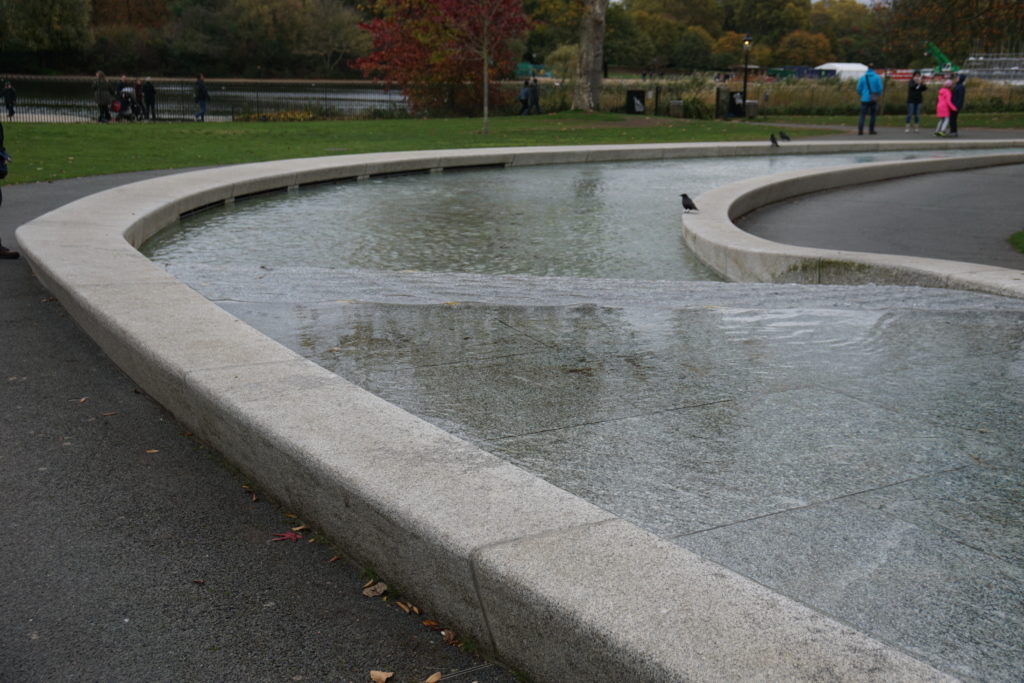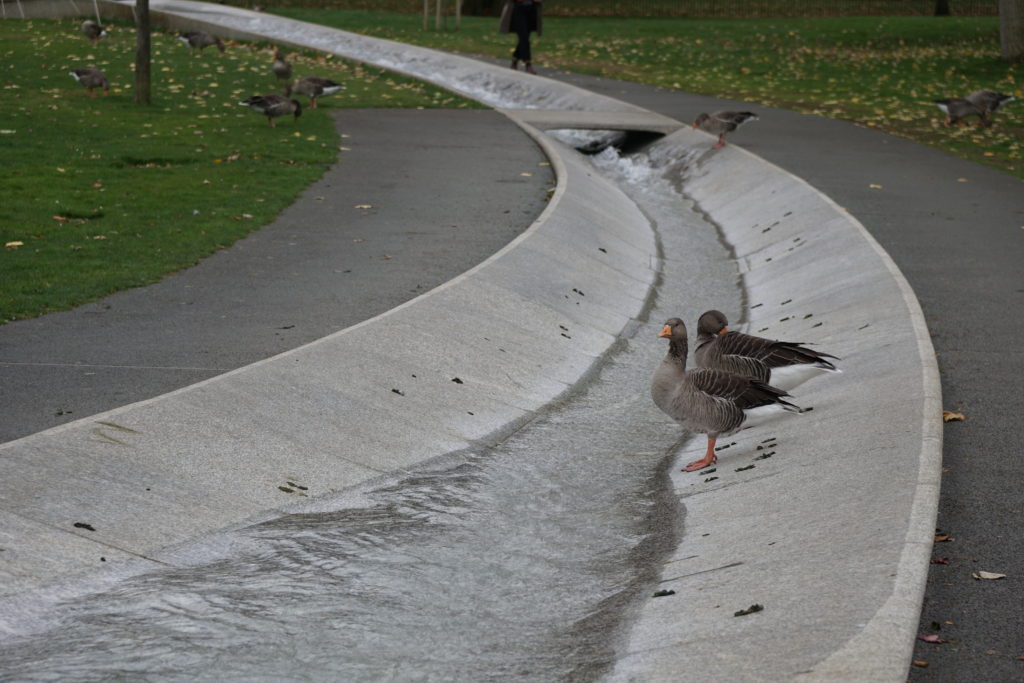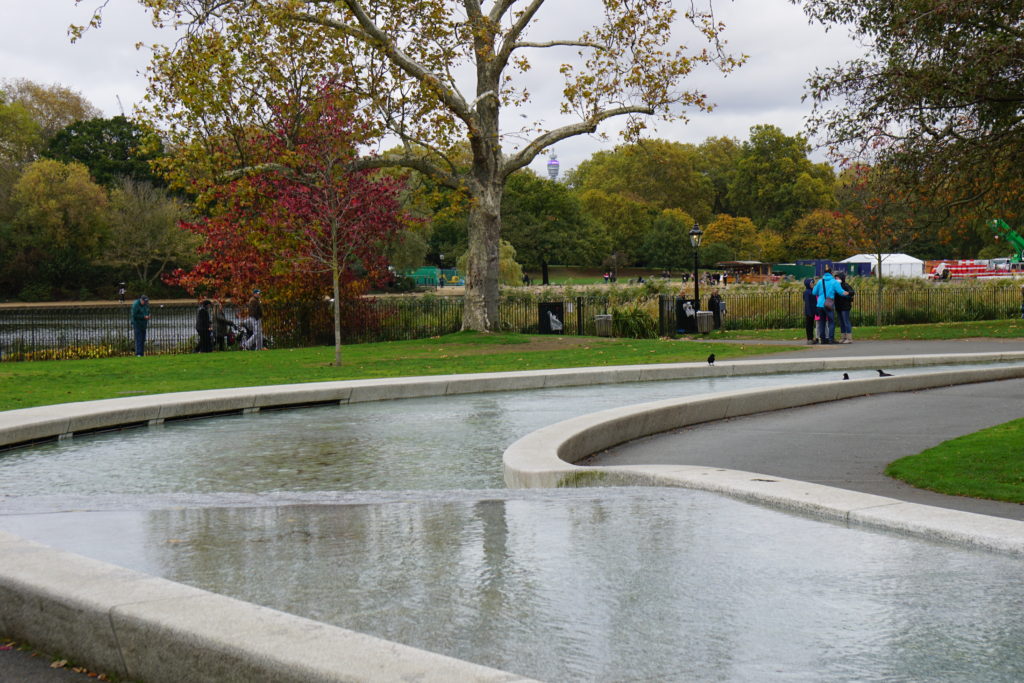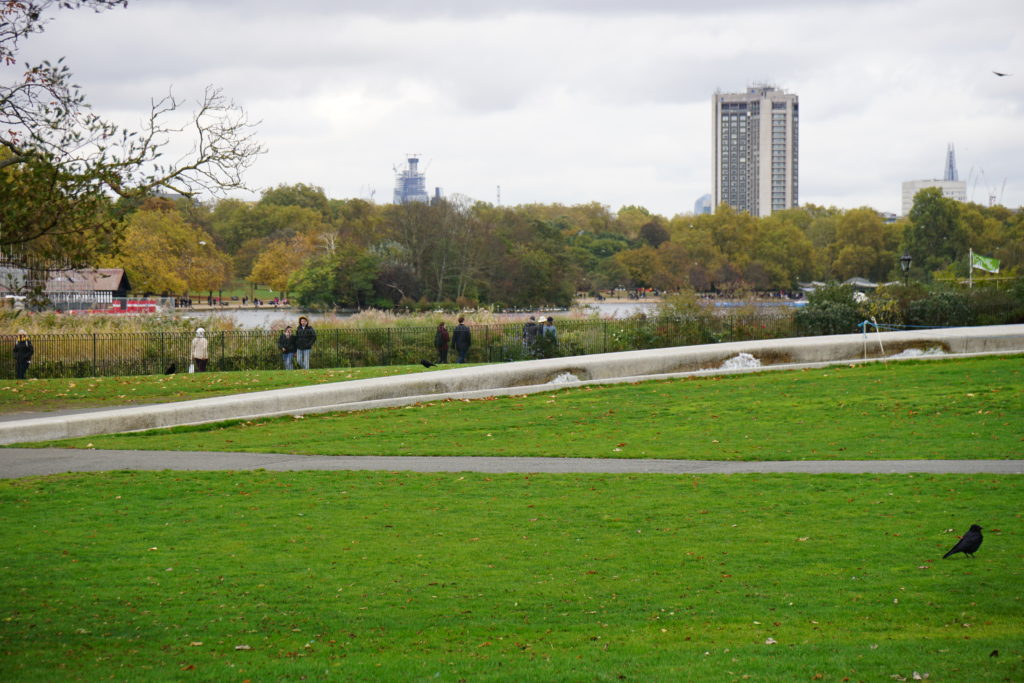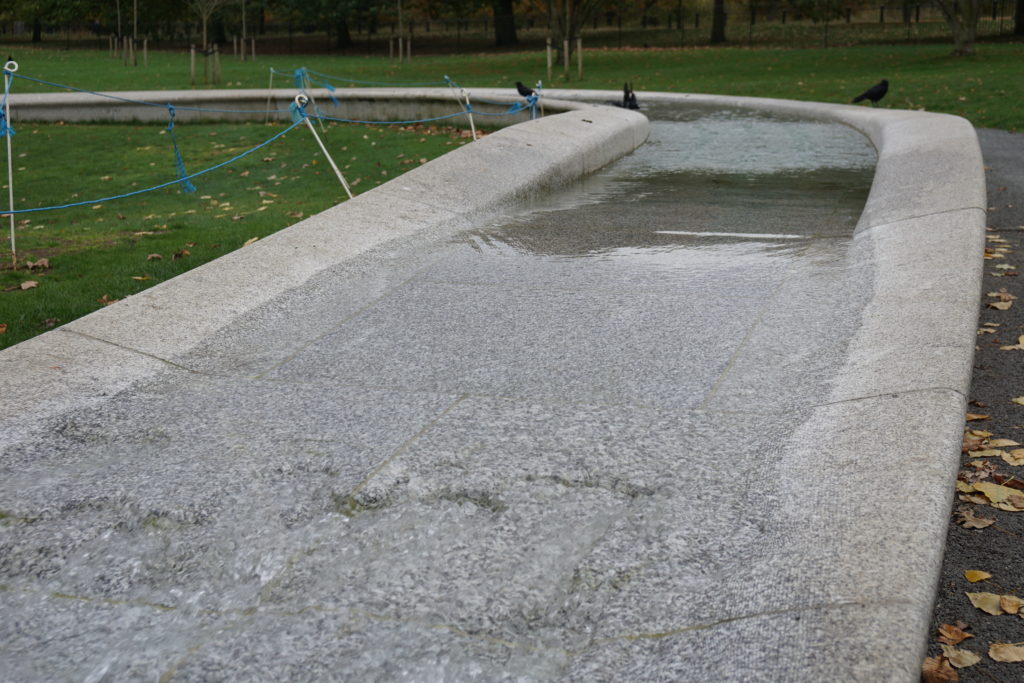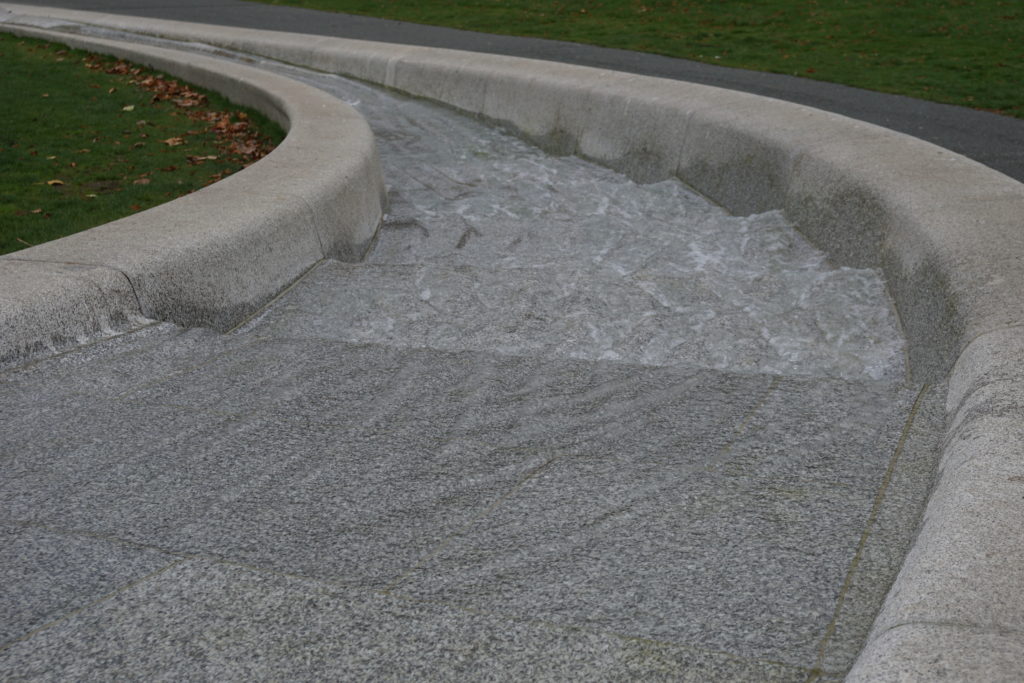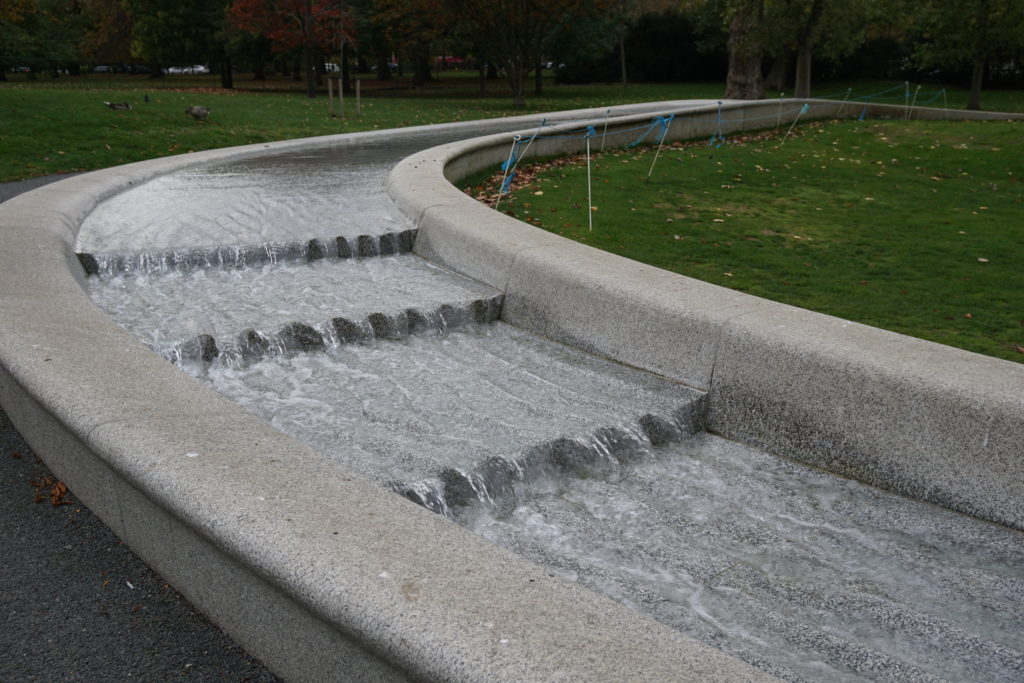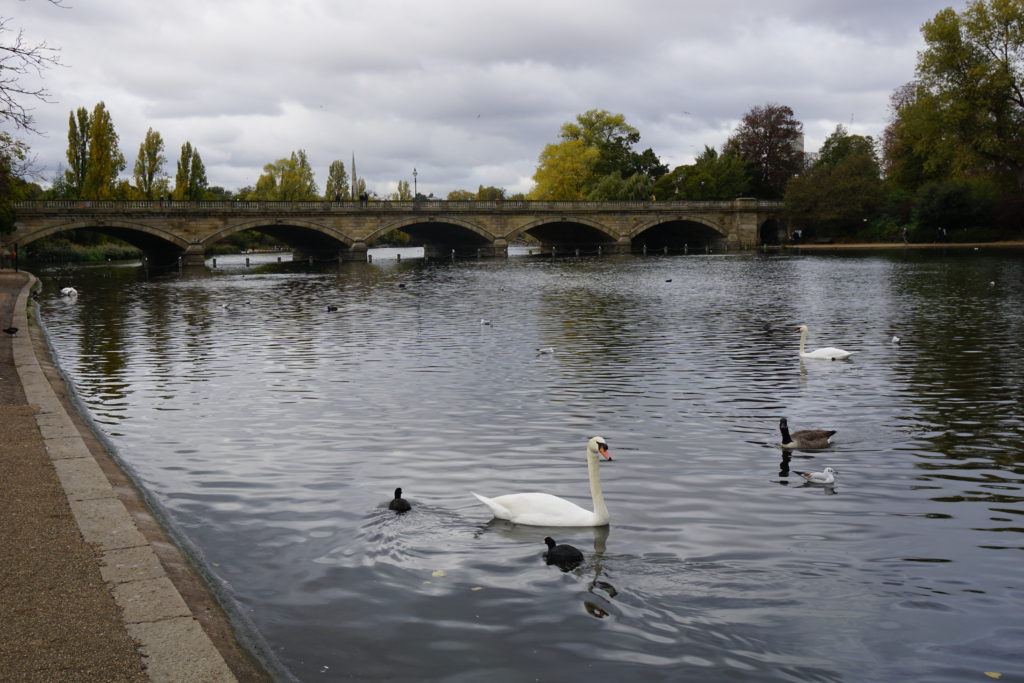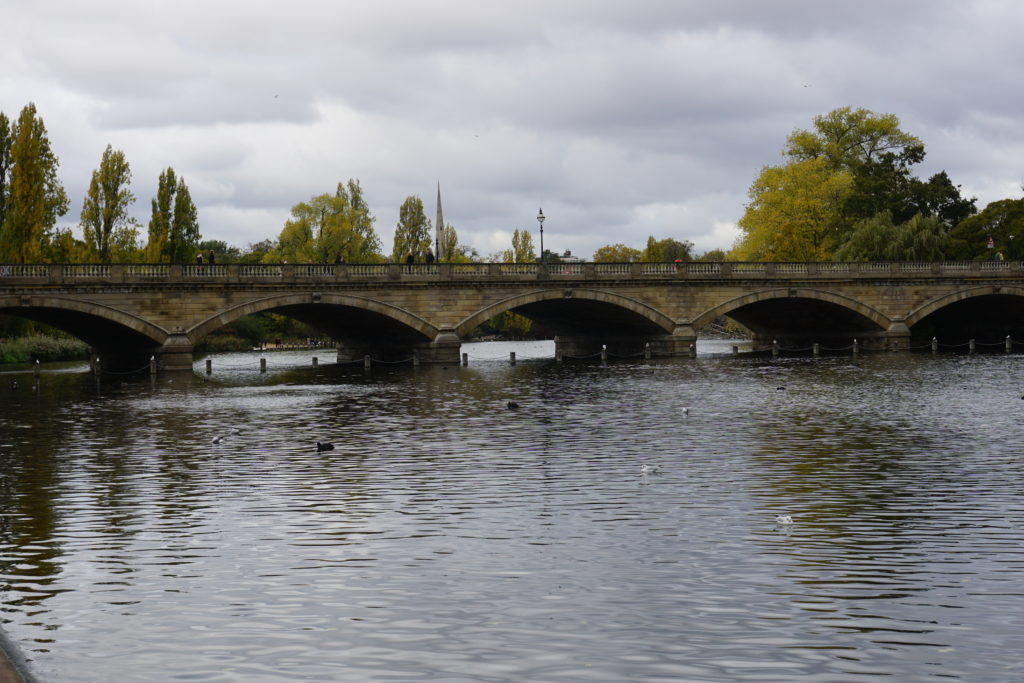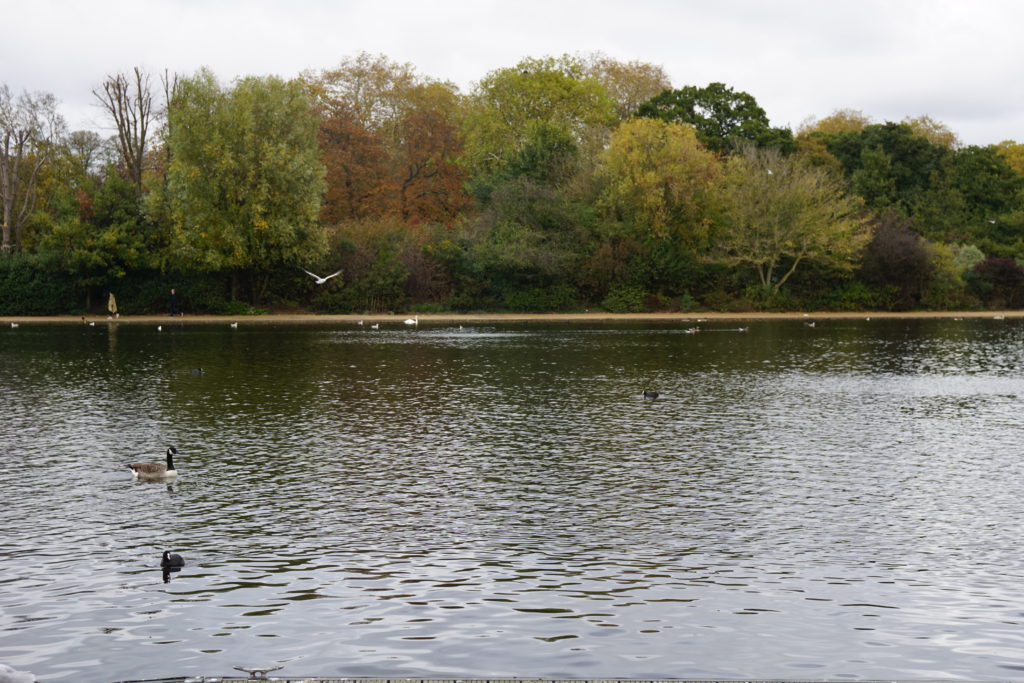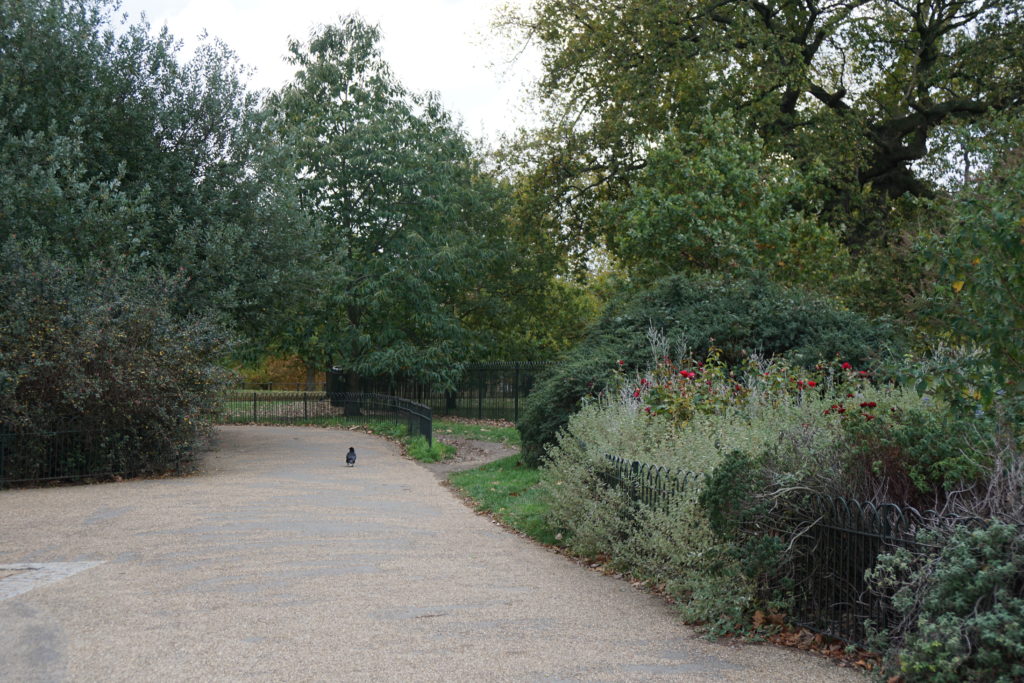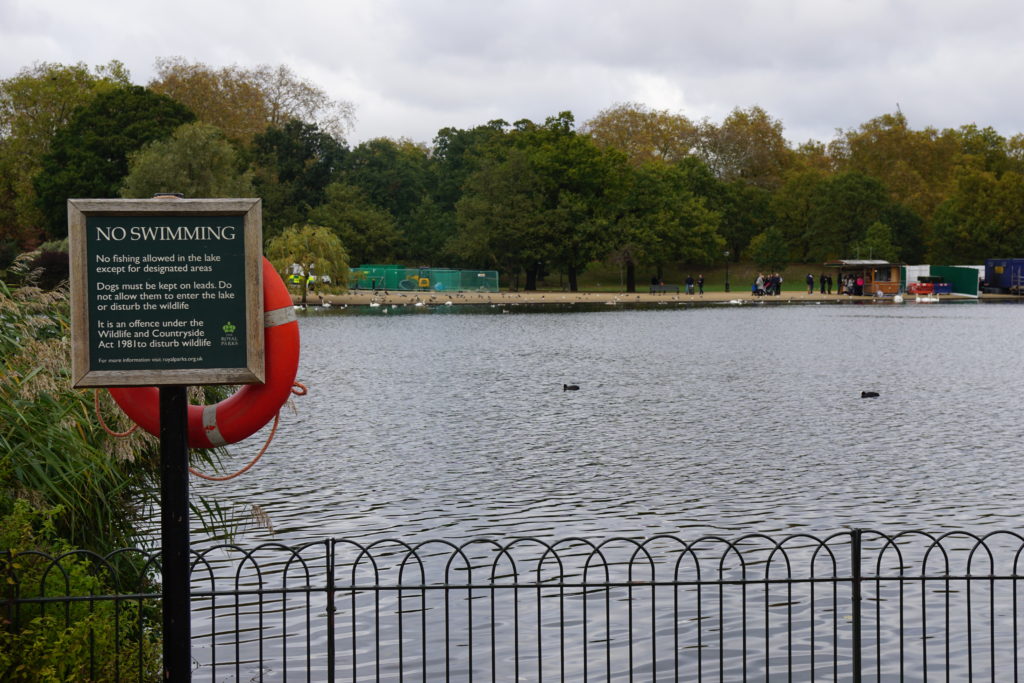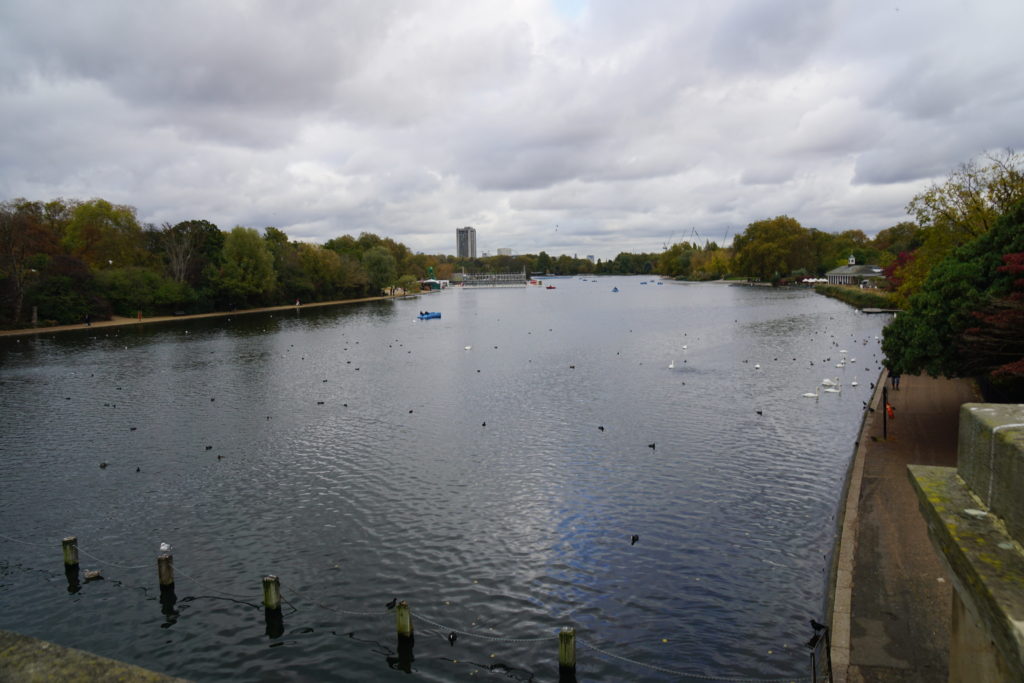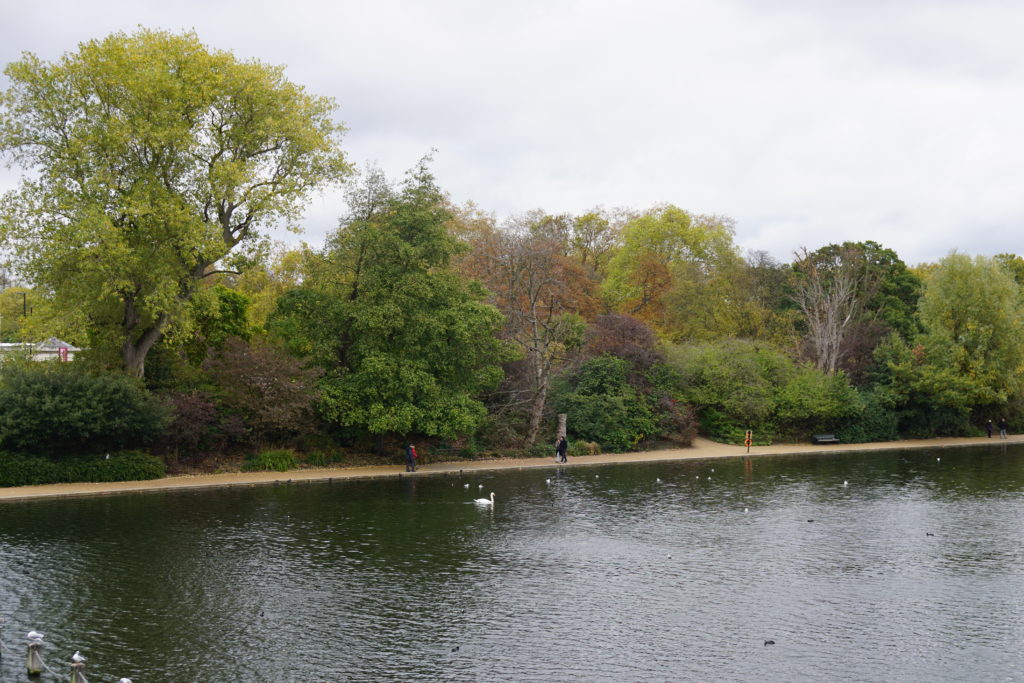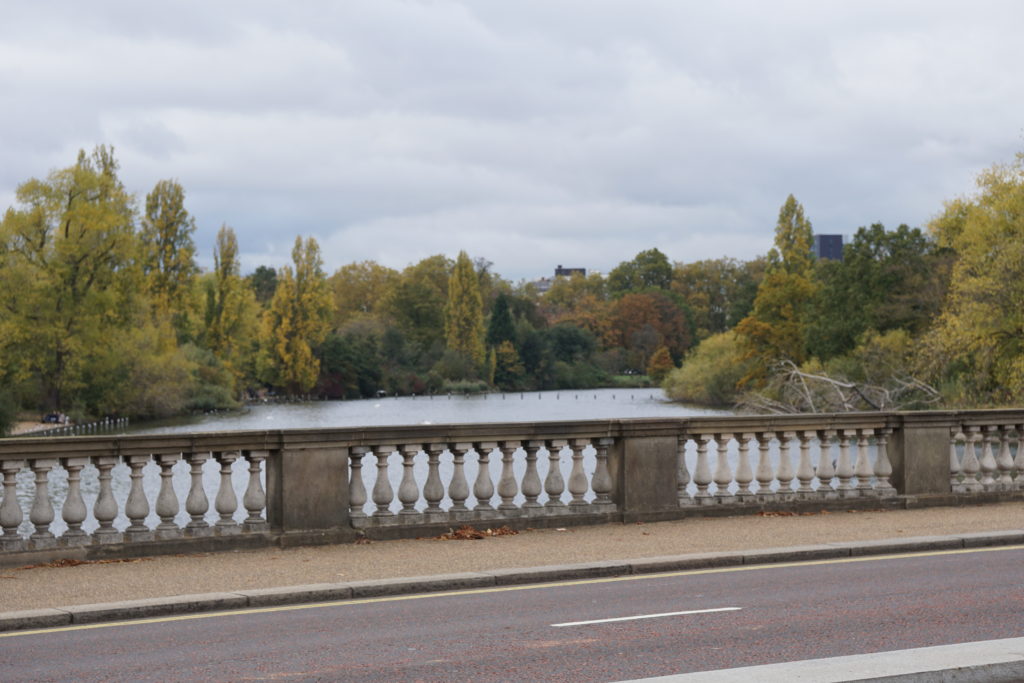When we arrived in London six days earlier, we had an extensive list of attractions we would be setting out to visit. One by one, we managed to check them off our list throughout the week. This morning we paid a visit to Abbey Road Studios—the final attraction on that list. Now what? Obviously, we hadn’t seen everything in London—certainly there was much more to see. But we had been to our “must see” places, so now we could simply say, what did we feel like doing? After pondering a few options, we decided Kensington Palace was the right move. After all, we were in town for an Eagles game (part of the NFL UK series), and Kensington, being a section in Philly—the section my father was from—seemed appropriate. Let’s see how it compared!
Kensington Gardens
We took the underground from Abbey Road Studios to the Queensway stop at Kensington Gardens. We entered the park, making our way towards Kensington Palace, which is located within the Gardens.
- Once the private gardens of Kensington Palace, Kensington Gardens are now one of the Royal Parks of London
- Covers an area of 270 acres
- Originally the western part of Hyde Park, which was created in 1536 by King Henry VIII to be used as a hunting ground
- It was separated from Hyde Park in 1728 at the request of Queen Caroline
Round Pond
Our walk through Kensington Gardens led us to Round Pond is an ornamental lake located in front of Kensington Palace. It was created in 1730 by King George II and measures roughly seven acres. It is the home to the Model Yacht Sailing Association (established 1876) and the Model Yacht Club (established 1884), but I’ll bet you already knew that!
Kensington Palace
In front of Round Pond lies our destination—Kensington Palace, much different than any palace in the Kensington section of Philly.
- Built in 1605 by Sir George Coppin. It was called Nottingham House.
- A Royal Residence since the 17th century, it is currently home to Prince William, his wife Catherine Middleton, and their children.
- First Royal residents were King William III and Queen Mary II after they purchased the mansion in 1689 for £20,000. Seems steep for the 15th century. Convert that into todays money, then into American dollars . . . it’s like a gazillion dollars. Actually, it’s just a little over $5M. Not too shabby.
- This was chosen as a Royal Residence due to King William’s health problems. Suffering from asthma, they chose to move further away from the River Thames.
- A portion of the palace is divided into apartments for the Royal Family, the other portion is open to the public as a tourist attraction.
- Was the home of several members of the Royal Family over the years, including Princess Diana, who—despite her divorce—lived there until her death.
- The gardens of Kensington Palace inspired the story of Peter Pan: Peter Pan in Kensington Gardens was written in 1906 by M. Barrie
So did we tour Kensington Palace? No! We did go in the gift shop, however—if that counts. You could think, how could you visit and not go in? Well, that happened a lot throughout the week. Sometimes you just have to keep yourself in check. As a tourist, there’s a sense of obligation that you must tour these historical places—or—lost opportunity. The truth is, touring can be time consuming. Had we toured all the places we had seen all week, we certainly would have seen fewer attractions. I believe you have to ask yourself a question—what will I take out of it?
Do I want to tour an attraction because I want to experience what it has to offer? Or because I feel I should because of it’s historical value? It’s easy to do it … just because. I believe it’s important not to get caught up in that. I have no doubt I would have enjoyed a tour of the Palace; however, just being there was quite fulfilling in itself. Had our stay in London been longer, perhaps a tour would have been in order. But our time was limited, so it was time to move on and see as much as we could.
More of Kensington Gardens
We had entered Kensington Gardens on the north side of the park, stopped to see the Palace, and continued to the south side of the park. Though it was an overcast chilly October day, it was a pleasant walk.
As I studied the map on my phone, I realized Royal Albert Hall was this way. I thought, I know that place! I have a David Gilmour DVD on my shelf at home—Live at Royal Albert Hall. I had to see it! Yes—I’m a huge Pink Floyd fan, and yes—I am aware of it’s historical significance beyond a Gilmour concert. Cream recorded their reunion DVD there too! At any rate, we were headed that way.
Royal Albert Hall
One of London’s most iconic buildings, the Royal Albert Hall is a concert hall that was opened in 1871 by Queen Victoria. It has a seating capacity of roughly 5,500 people.
I had to appreciate irony. Earlier in the day we had been at Abbey Road Studios. A famous line recorded by the Beatles at Abbey Road goes like this, “now they know how many holes it takes to fill the Albert Hall.” Hours later—I’m standing in front of the Royal Albert Hall.
So…how many holes does it take to fill the Albert Hall? Four thousand—but you probably knew that. Here’s something you may not have known—the Royal Albert Hall was less than thrilled with this Beatles lyric. They objected in the “strongest conceivable terms.” In a letter from Royal Albert Hall Chief Executive Ernest O’Follipar to Beatles manager Brian Epstein, O’Follipar suggested that, “it is likely to deter concertgoers who do not want to fall into a hole.” Seriously, this was the actual concern—you have to read the letter! You can real all about it on Albert Hall’s website: click here to check it out.
Fortunately, I did not go in. I did not want to fall into any holes!
Albert Memorial
Across the street from the Royal Albert Hall, in Kensington Gardens, lies the Albert Memorial. It was commissioned by Queen Victoria in memory of her husband, who died in 1861.
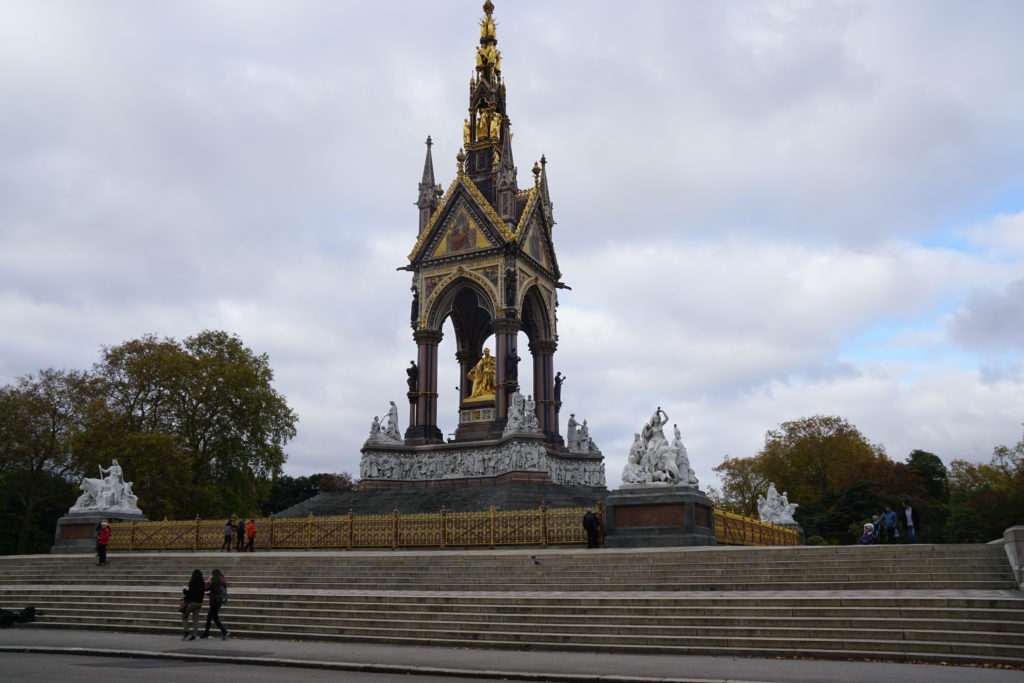
- Designed in the Gothic Revival style, it stands at 176-feet tall
- It took ten years to complete
- It cost £120,000 to build, today’s equivalent to £10-million. Convert that to U.S. dollars and that number continues to grow.
- The memorial opened in July 1872 by Queen Victoria; the statue of Albert followed in 1876.
Park Transition
Kensington Gardens and Hyde Park in essence make up one gigantic park. There is a body of water between the two—the western part is referred to as the Long Water, the eastern part is called the Serpenetine. The two parts are divided by the Serpentine Bridge, which marks the boundary between Kensington Gardens and Hyde Park.
Leaving the Albert Memorial, we would cross this bridge into Hyde Park, but not before running into the Princess Diana Memorial Fountain. I admit, I struggle to ascertain whether it is in Kensington Gardens or Hyde Park. My understanding is Hyde Park is west of the Serpentine Bridge; however, despite being described as located in Hyde Park, the fountain sits on the west side of the bridge. The struggle is real.
Diana Memorial Fountain
The Princess Diana fountain is a memorial dedicated to Diana, Princess of Wales, who was killed in an automobile accident in 1997.
It was officially opened on July 6, 2004 by Queen Elizabeth II. If you’ve seen the movie, The Queen, you might imagine she grudgingly did this. It was built at a cost of £3.6-million—designed by American landscape artist, Kathryn Gustafson.
Hyde Park
Departing the Diana Memorial Fountain, we crossed the Serpentine Bridge into Hyde Park. I knew this place! This was the site of the London portion of Live 8—a concert simultaneously held in multiple cities throughout the world in 2005. Interesting fact: I was in attendance in Philly for the Live 8 concert—and having watched the DVD—I can assure you those in attendance at the London concert made out much better than I did. After nearly twenty five years, the original members Pink Floyd reunited for the Live 8 at this location here in London. Need I say more?
- The largest Royal Park in London
- Established by King Henry VIII in 1536. He took the land from Westminster Abbey and used it as hunting ground.
- Opened to the public in 1637
- The Serpentine Bridge was built in the 1820’s
- The Serpentine, a 40-acre recreational lake, was created in 1730
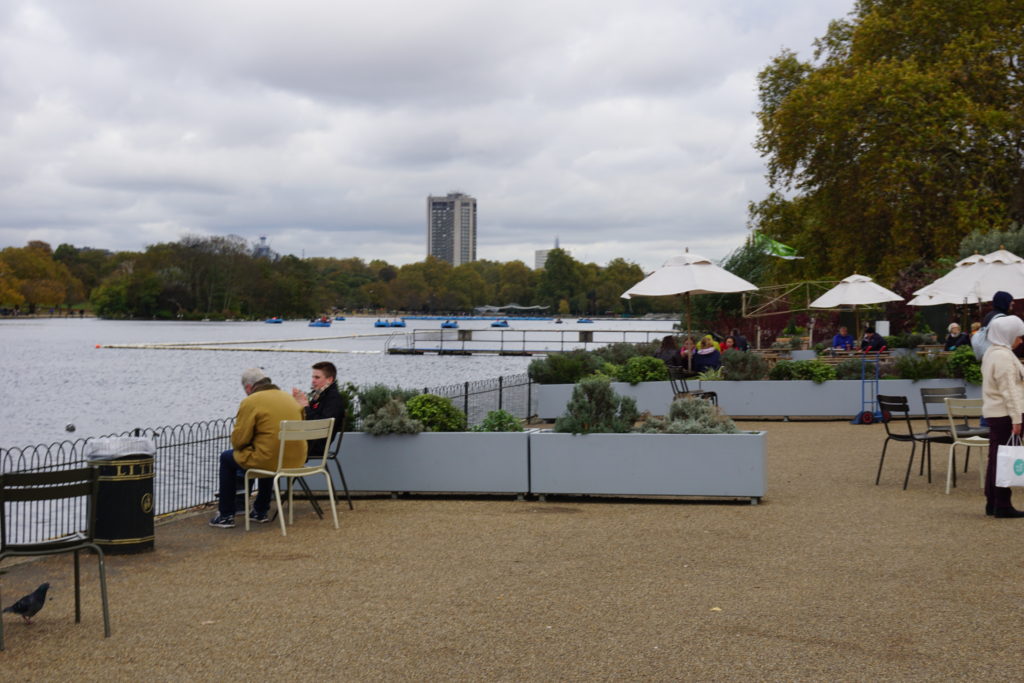
Once a popular place for duels, in 1712 there was a duel held between James Hamilton, 4th Duke of Hamilton, and Charles Mohun, 4th Baron of Mohun. In American history, there was a famous duel in which Alexander Hamilton was killed by Aaron Burr. How ironic! The outcome of this British version Hamilton duel was quite different. The men fought with swords; the result … both men died of injuries. Kinda makes you wonder, what was the point of that?
Let me say this: a walk through Kensington Gardens and Hyde Park was quite the adventure. Our experience far exceeded our expectations. Not only did we take in a bit of culture, but our walk was quite relaxing as well. Now later in the afternoon, food was in order. I had a place in mind—a pub I believed would become an attraction in itself. The Victoria Pub was just a short walk from our location. We were headed that way!


